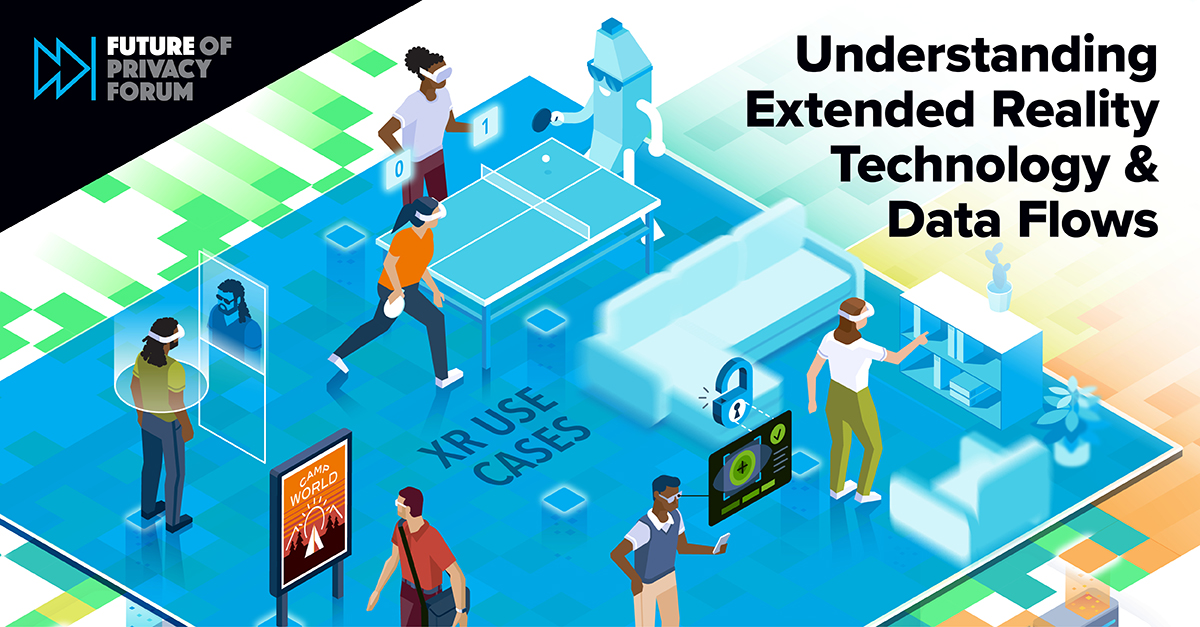Understanding Extended Reality Technology & Data Flows Infographic
This FPF infographic visualizes how extended reality (XR) data flows work by exploring several use cases that XR technologies may support. The infographic highlights the kinds of sensors, data types, data processing, and transfers that can enable these use cases.
XR technologies are powered by the interplay of multiple sensors, large volumes and varieties of data, and various algorithms and automated systems, such as machine learning (ML). These highly technical relationships enable use cases like shared experiences and expressive avatars. However, these use cases often depend on information that may qualify as sensitive personal data, and the collection, processing, and transfer of this data may pose privacy and data protection risks to both users and bystanders.
FPF’s analysis shows that sensors that track bodily motions may also undermine user anonymity. While tracking these motions can help map a user’s physical environment, it can also enable digital fingerprinting. This makes it easier for parties to identify users and bystanders while raising de-identification and anonymization concerns. These risks may discourage individuals from fully expressing themselves and participating in certain activities in XR environments due to their concerns about retaliation.

